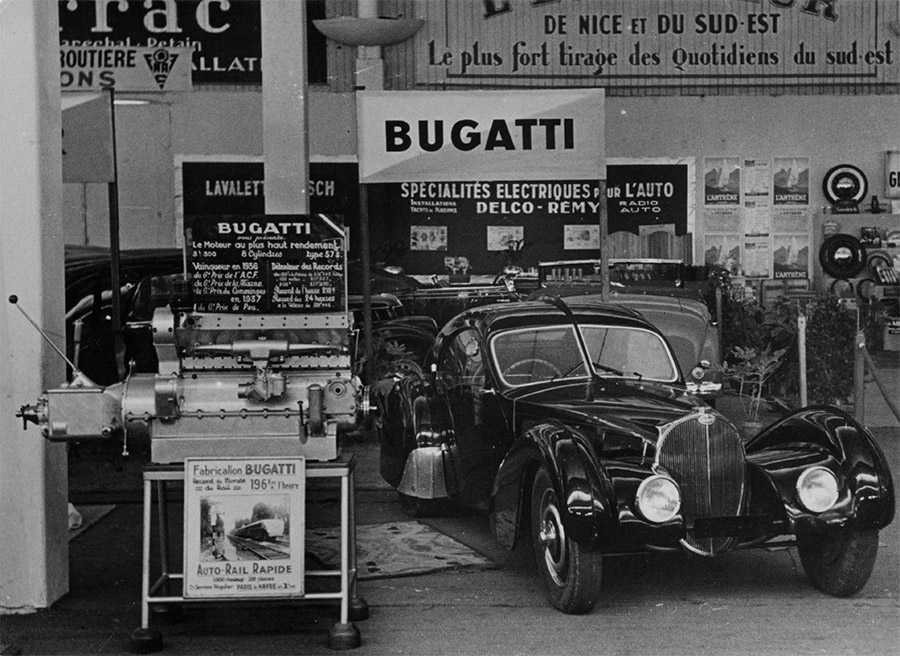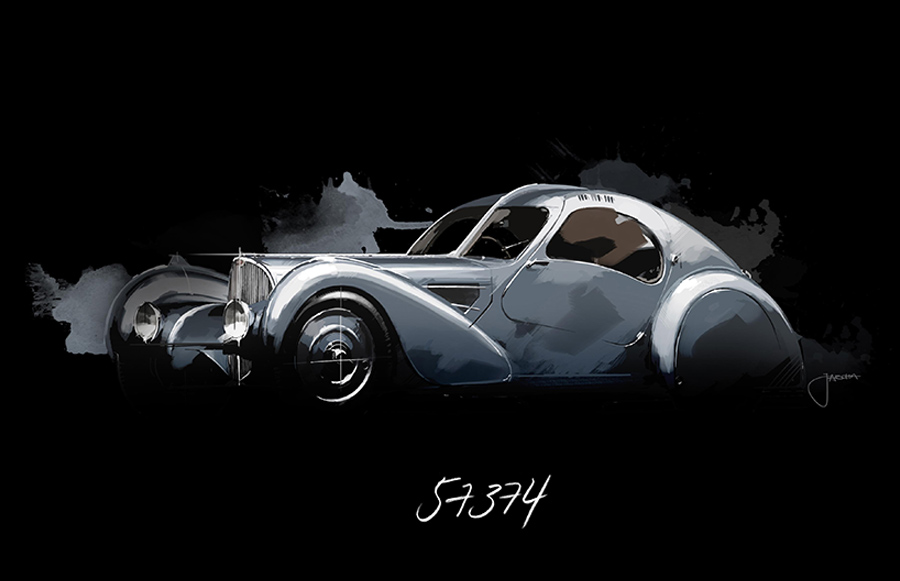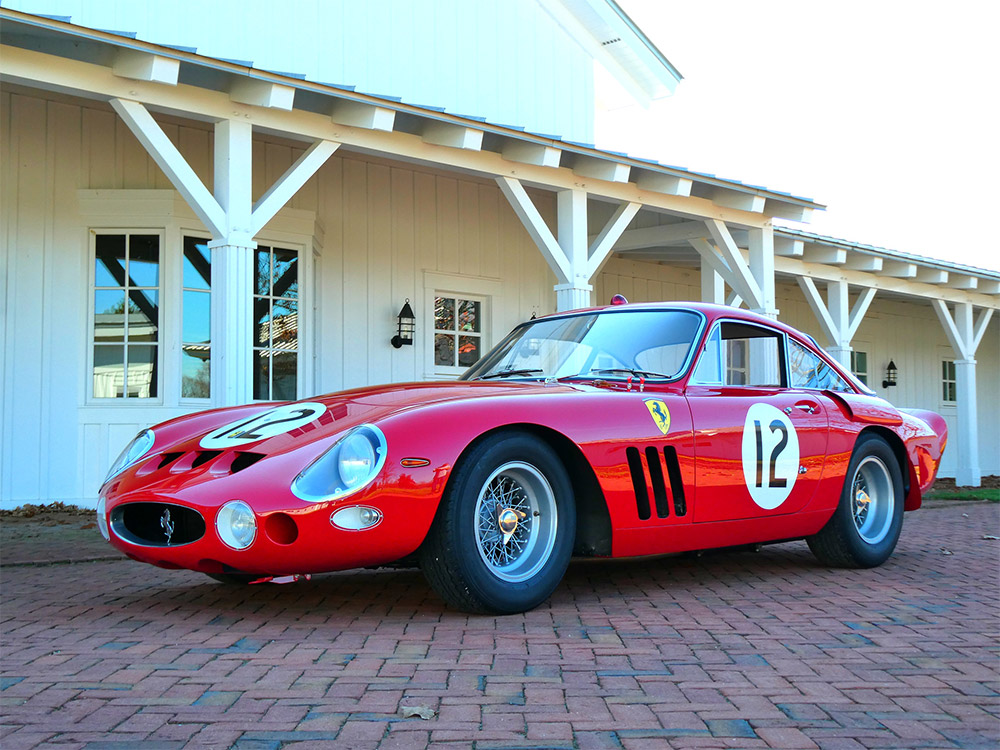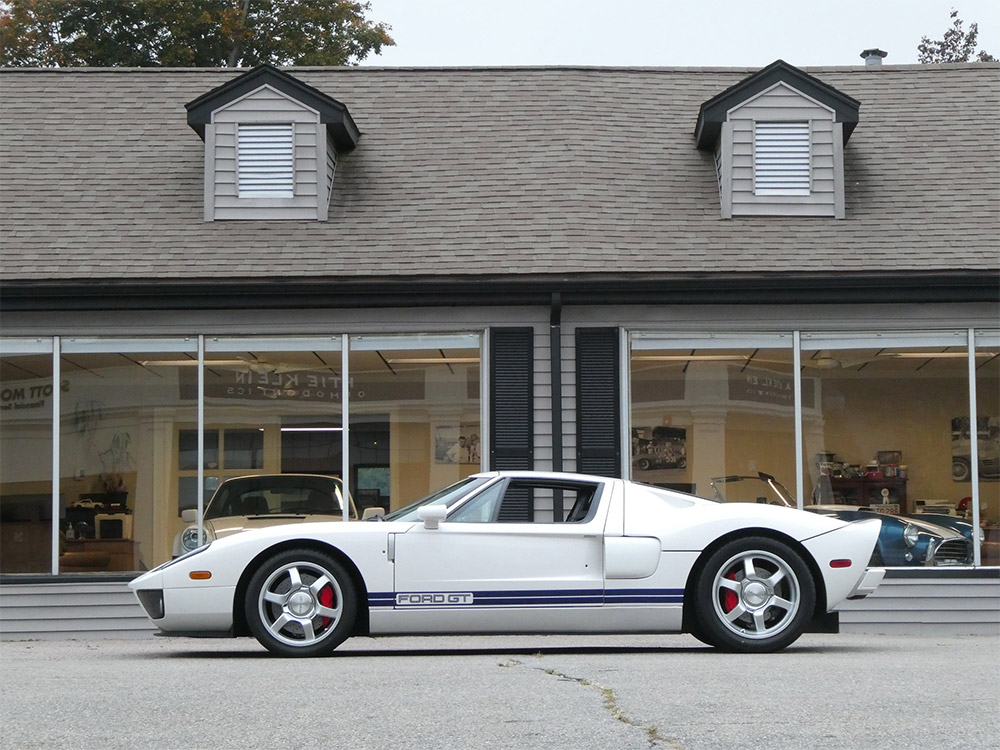Elegant, sporty, luxurious and rare. These are four of many epithets that can be applied to Bugatti. But there is one model for which they are especially appropriate: the Bugatti Type 57 SC Atlantic Coupé is not just one of the Bugatti legends but perhaps the greatest. Only four of these cars were created between 1936 and 1938. Three of these extraordinary coupés are still in existence. They are regarded as the most valuable cars in the world. The automotive world has been searching for the fourth Atlantic for over 80 years.
“The Atlantic is among the icons in Bugatti’s long tradition. In terms of elegance, quality and performance, the coupé was unique in its time and is still unique today. A luxury super sports car. For us, it is both an inspiration and a commitment,” says Stephan Winkelmann, President of Bugatti. “Our current hyper sports cars Chiron1, Chiron Sport and Divo2 continue this tradition in the modern age – in line with the spirit of Bugatti.“
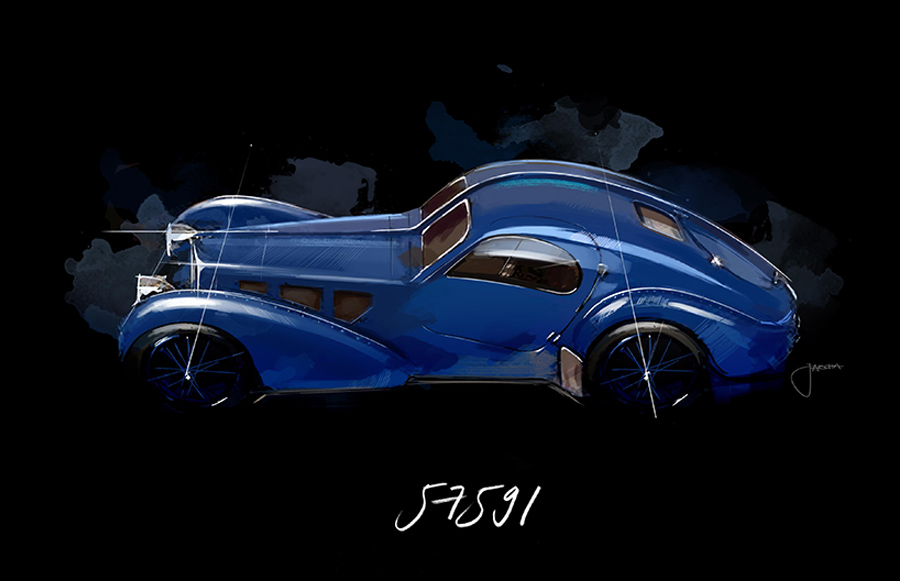
Ettore Bugatti’s son Jean started to modernize the luxury brand’s model policy in around 1930. Instead of several different models, he developed one base model from which he derived several different variants. Bugatti designed the Type 57 as a production car and as a racing variant, the ultimate grand tourisme. The range included various engine options and bodies such as Galibier (four-door saloon), Stelvio (convertible), Ventoux (two-door saloon) and Atalante (coupé). By the time production had come to a halt in 1940, about 800 Type 57 models in the various different versions had left the factory hall. The precise number is unknown, but the Type 57 remains the Bugatti model with the highest production figures.
A breathtakingly elegant body
Of course, this does not apply to the Atlantic. When it first appeared, its body was already strikingly beautiful and exotic. The wheels stand out from the body and the bonnet is extremely long for a car with an overall length of only 3.70 metres. The rear end flows down in an oval shape extending almost to the ground. Six thin tailpipes complete the rear view. An outstanding design feature is a raised seam running vertically from the hinge in the split bonnet to the tail. Like a sharp fin, it divides the body in the middle. Rivets hold the split metal sheets in place.
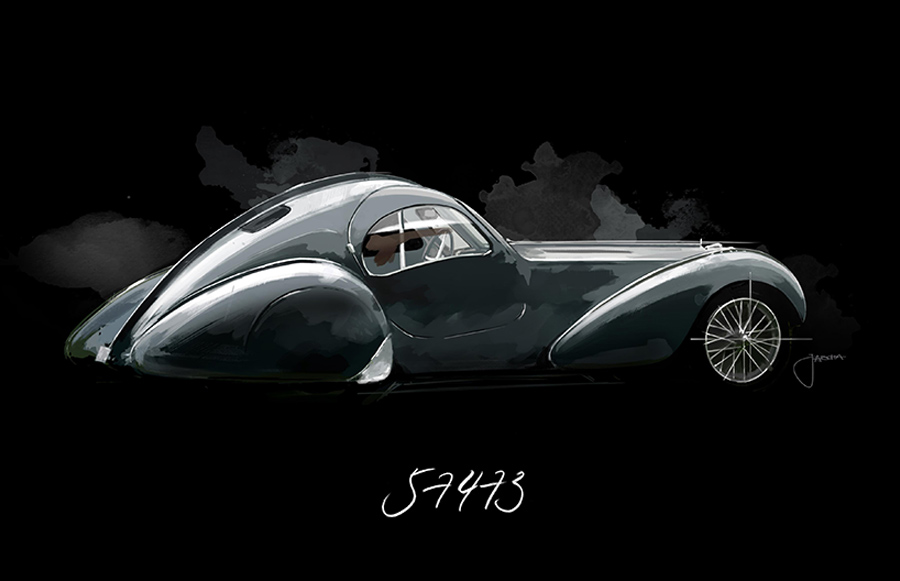
The Atlantic models were developed from the unique Aérolithe prototype, also known as Coupé Special or Coupé Aero. For this model, with chassis number 57 104, Jean Bugatti used Elektron sheet from aviation for the body. Elektron is an alloy of 90 percent magnesium and 10 percent aluminium. Although it is lightweight and strong, it is difficult to work and cannot be welded, which is why Bugatti riveted the body parts together, creating the famous dorsal seam. For the “production” Atlantic, Bugatti used aluminium but retained the rivets on the dorsal seam. The model is named in honour of Bugatti’s friend Jean Mermoz. The pioneering aviator was the first to cross the South Atlantic by air. He did not return from a South Atlantic crossing in 1936.
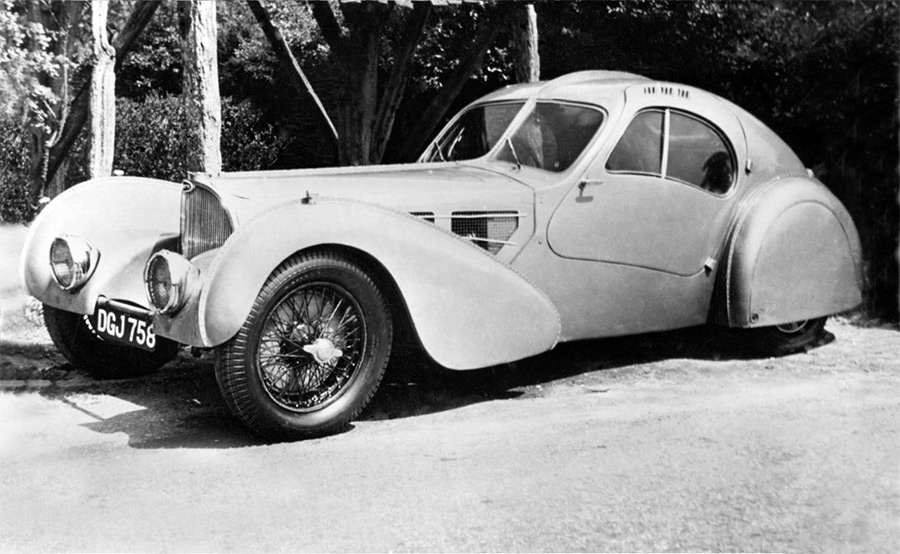
The doors continue into the roof to make it easier for passengers to enter and leave the low-slung coupé. The headlamps of the first two cars are integrated into the wings while the other two cars feature separate headlight housings. The four cars have many other different details – each model is unique. “The Type 57 SC Atlantic is a design manifesto of Jean Bugatti. The breathtaking proportions of this masterpiece were simply unparalleled at the time and are still thrilling to the present day with their fascinating elegance,” says Achim Anscheidt, Director of Design at Bugatti. In international beauty contests for historic automobiles such as the Pebble Beach Concours d’Elegance in California, these models have won a number of prizes over the past few years. “The riveted aluminium seam running over the roof is still a signature design feature to this day. It is unique and elegant,” Achim Anscheidt adds.
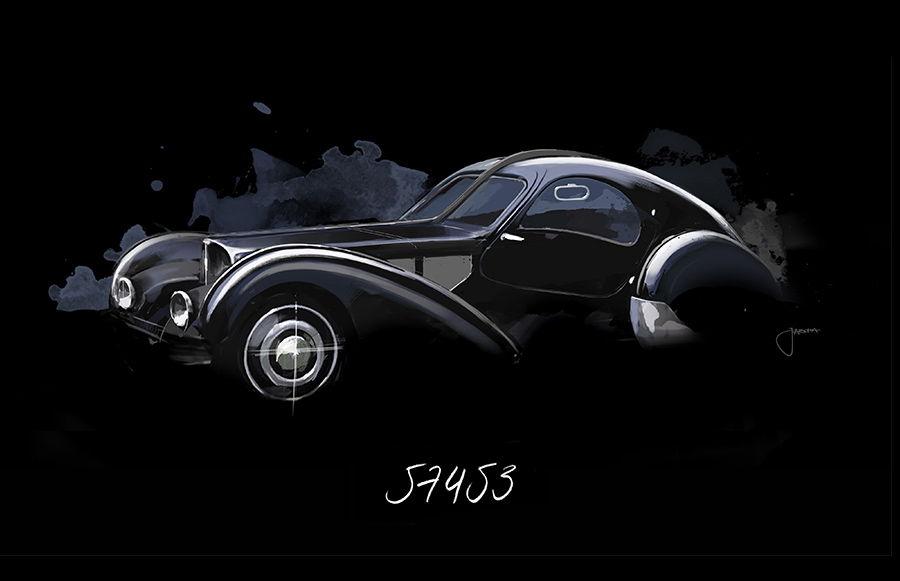
The coupé is powered by a silent, strong 3.3-litre straight-eight with up to 200 PS and the top speed was in excess of 200 km/h – at a time when horse-drawn carts still featured prominently on many roads. “Bugatti has been groundbreaking and progressive for many years, with four following performance. That has not changed up to the present day,” says Stephan Winkelmann.
Only three cars were made for customers
Bugatti sold only three of the hand-crafted Atlantic cars to customers. In 1936, Bugatti built the first model for British banker Victor Rothschild, originally without a supercharger, in grey-blue. This vehicle, with chassis number 57 374, is now known as the “Rothschild Atlantic”. The “Holzschuh Atlantic”, the third car built, with chassis number 57 473, was delivered to Jacques Holzschuh of France in October 1936. The second owner of the car, a collector, died in an accident on a level crossing. The Bugatti was completely destroyed. Decades afterwards, it was the subject of a complex restoration, although the engine could not be saved. Fashion designer Ralph Lauren is the owner of the last Atlantic produced, with chassis number 57 591, the “Pope Atlantic” was completed in May 1938 – its first owner was the Briton R.B. Pope.

Jean Bugatti had the second Atlantic made for himself. Only he or a few selected friends, mainly Bugatti racing drivers, had the honour of sitting behind the large steering wheel of the coupé with chassis number 57 453. Bugatti used “La Voiture Noire” (the black car) with a front bumper and lower doors as a model for photos in brochures and a demonstration car for international motor shows such as those in Lyon and Nice. In contrast to the other models, there is no trace of this car after 1938. It is not quite clear whether Jean Bugatti sold the car to a racing driver among his friends or whether it was moved to a safer region of France when the German army invaded Alsace, which is more probable. However, one thing is clear – the second Atlantic built has not been found to this day. Its disappearance is one of the great mysteries in the history of the automobile. Experts estimate the value of the Atlantic at more than €100 million – if it ever appears again.
